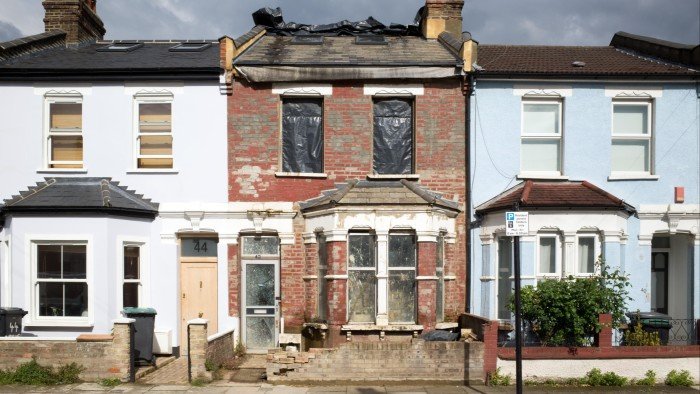Unlock the Editor’s Digest for free
Roula Khalaf, Editor of the FT, selects her favourite stories in this weekly newsletter.
The number of properties “flipped” in England and Wales hit a record 12 year low, as rising stamp duty costs wiped out investor’s profits, new analysis showed.
Flipped properties — homes bought, then re-sold within a year — accounted for just 2.3 per cent of all residential property transactions in the first financial quarter of 2025, down from 3.6 per cent the previous year, according to research from estate agent Hamptons.
This was the lowest proportion since 2013, where flipped properties also accounted for 2.3 per cent of transactions, as the housing market suffered from the lingering effects of the 2008 financial crisis.
Investors who flip properties aim to make a profit typically from renovating the property they have bought and selling it a higher price.
However, the average gross profit made by an investor also fell, according to Hamptons’ data, declining from 17 per cent in the first quarter of 2015 to 10 per cent in 2025, due to weaker house price growth and a shift towards flipping cheaper properties.
This sharp drop in investor profits can be accredited to changes in legislation causing stamp duty bills on flipped homes to rise to an average of £6,375 on initial purchases during the first quarter.
Stamp duty land tax (SDLT) bills now cost the average person flipping a home in England and Wales a record 30 per cent of their gross profit, averaging at £11,920 according to Hamptons.
“Bigger stamp duty bills are wiping out a lot of profit from flipping,” said Aneisha Beveridge, head of research at Hamptons. “Stamp duty bills now account for nearly a third of gross profits.”
Beveridge added in some circumstances that “bills are now higher than the cost of renovating the property” and coupled with rising material and labour costs can make “flipping homes an increasingly tricky business”.
According to tradesperson platform Checkatrade, the average cost of renovating a property is £76,690, including new gas and heating systems, rewiring electrics and replastering walls.
Matt Thompson, head of sales at estate agent Chestertons, voiced similar concerns: “A lot of investors who focus on flipping property have found that their return on investment has decreased over the past years.
“Key factors are not only higher property prices in sought-after or up and coming areas but also higher labour and construction material costs.”
Lower returns, predominantly due to higher stamp duty costs, ultimately reduced the number of profitable flipped properties. In spite of 80 per cent of properties being sold for more than they were bought, only 66 per cent made a profit following the payment of stamp duty.
Just 7,301 flipped homes were sold in the first quarter, nearly 30 per cent below the 10-year first-quarter average.
“It [second home stamp duty surcharge] has multiplied costs for those people who are refurbishing homes to a level that is increasingly unviable,” added Beveridge.
“These are often empty homes . . . and are typically projects which most first-time buyers and movers have shied away from.”
Rising costs have “pushed investors further north”, where property prices and therefore stamp duty costs are lower, with 61 per cent of flipped properties being in the Midlands, north of England or Wales.
In contrast, the expensive southern region experienced the biggest declines in the share of flipped homes, with just 1.5 per cent of homes being sold this year in London being bought in the past 12 months.

